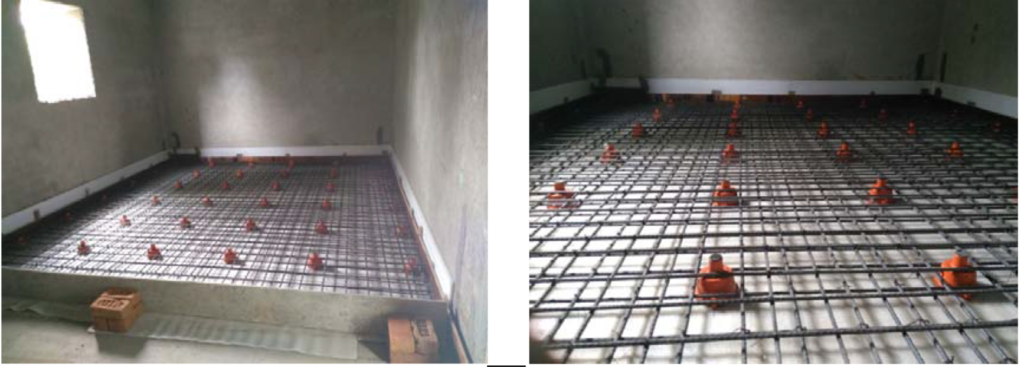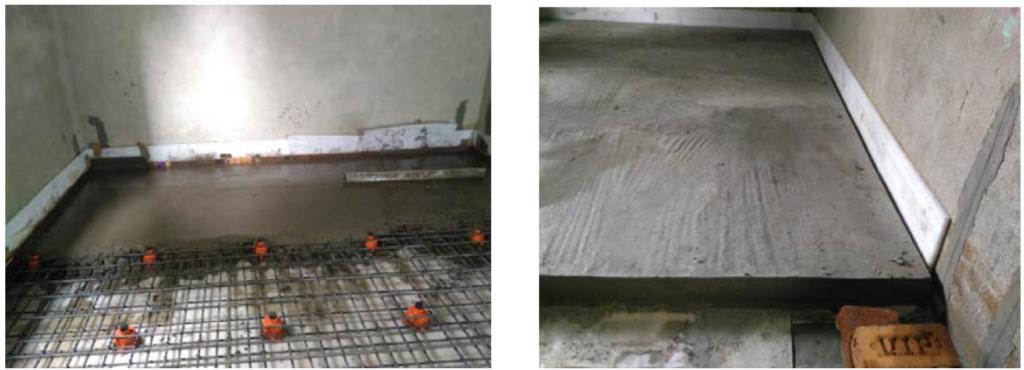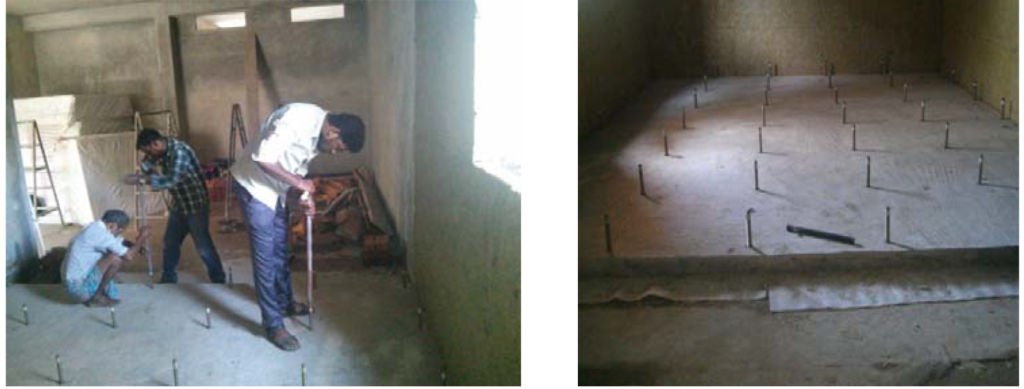
Location: Madras Talkies Studio, Chennai
Objective: The objective of this project was to prevent the transmission of sound outside the Recording Studio so as to preserve the quality of the Sound inside the Audio Studio.
An Audio Studio by A. R Rahman was designed in Chennai with the purpose of recording music. Therefore, it was essential to preserve the sound quality inside the studio and prevent its transmission outside. We at Easyflex, the experts of Noise & Vibration Isolation were approached by the client to provide an appropriate solution for the same.
The solution that was proposed and finally executed by us was the ‘Floating Floor System using Easyflex Jack Up Mounts’. This solution was based on the principle that sound transmission from a particular room can be prevented by the introduction of an air gap at the floor. The air gap can be anywhere between 1” and 4” depending on the isolation efficiency required, and in this case, a 4” air gap was chosen.
Step 1: The first step was to calculate the loads that the floating floor would sustain. A design report including the selection and position placement of Easyflex Jack Up Mounts was made based on the calculated loads.
Step 2 : Next, a plastic sheeting was placed over the floor as a breaking layer over which Easyflex Jack Up mounts would be placed.

Step 3 : Next, Easyflex Jack Up mounts were placed at particular locations on the floor based on the design report as shown in the pictures below.

Step 4 : After this, reinforcing steel bars were rested over the isolator housings in the form of a mesh as can be seen in the pictures.

Step 5: Once, the reinforcing bars were in place, the next step was to pour the concrete floor. This was done as shown in the pictures below.

Step 6: Once the poured concrete had cured, the slab was lifted to elevation by turning the adjustment screw cavity above each Easyflex Jack Up Mount to the specified air gap of 4”.

Step 7: Finally, the required air gap of 4” was achieved which would prevent the transmission of sound from the studio and protect the sound quality inside the recording studio.

